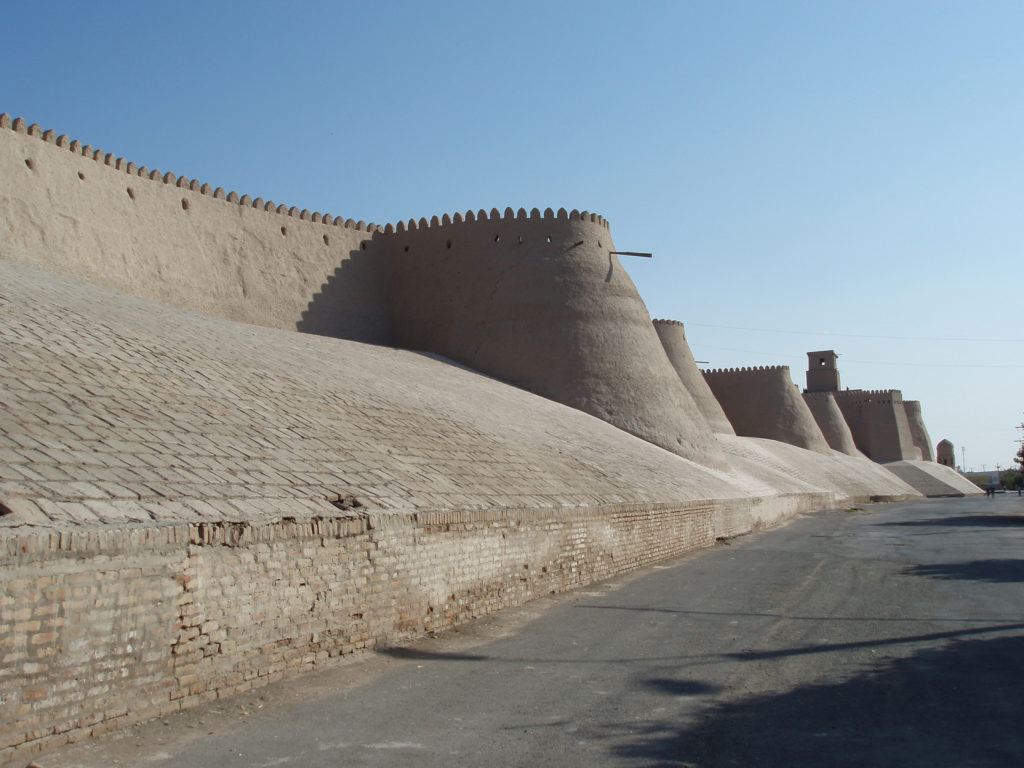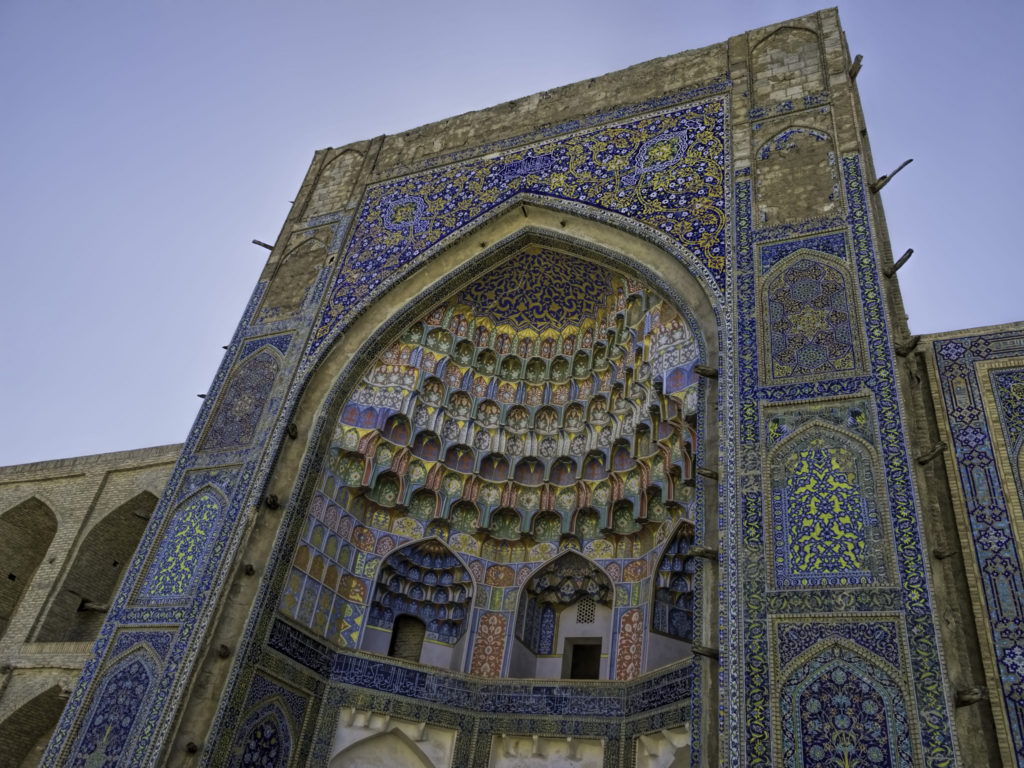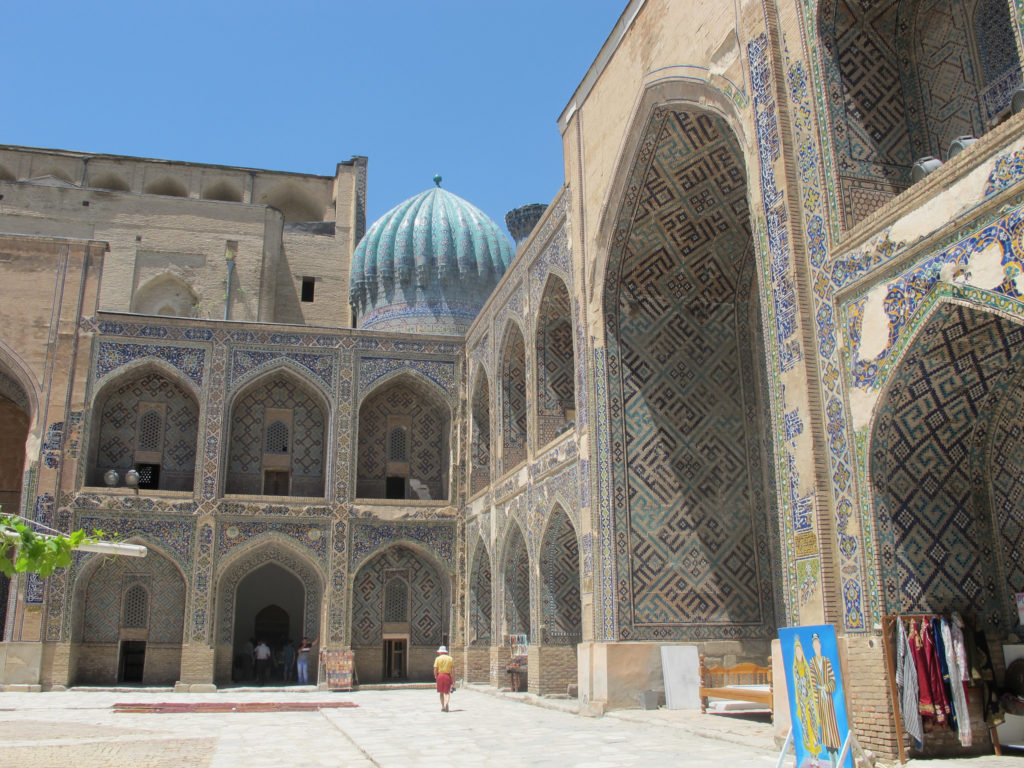One of the most important hubs on the legendary Silk Road trading route and a vibrant center for the meeting and mixing of different people and traditions, Uzbekistan is an ancient country with a rich cultural legacy. Of its many fascinating historical sites, five are officially inscribed on UNESCO’s list of World Heritage Sites: four cultural properties and one natural one. Read on for a glimpse of these five amazing treasures, listed by year of inscription.
-
Itchan Kala (1990)
Uzbekistan’s first designated World Heritage Site, Itchan Kala, is the inner town of the old Khiva oasis: historically one of the most important stops on the Silk Road, as it was the last place for traders and their caravans to rest before crossing the desert to Iran. Itchan Kala is a unique example of an ancient walled city—the center of the town is protected by brick walls roughly 10 meters high—and one of the best-preserved specimens of Central Asian Muslim architecture. Spanning some 26 hectares, Itchan Kala has an abundance of ancient monuments and dwellings, including the beautiful Djuma Mosque and two spectacular palaces built by Alla-Kulli-Khan in the early 19th century. However, the site is more than the sum of its parts. Itchan Kala provides an incomparable example of holistic urban composition, particularly in regards to the care with which later developments—in the 19th and 20th centuries—were integrated into the town’s traditional structure.

-
Historic Center of Bukhara (1993)
At more than 2,000 years old, the historic center of Bukhara is the most complete example of a medieval city to be found in Central Asia. Like many of Uzbekistan’s cities, Bukhara was a major stop on the Silk Road and an important economic and cultural center, and its urban fabric has been preserved to a remarkable degree. The city contains a number of important monuments which have survived from earlier times, including the tomb of Ismail Samani, which is a 10th century architectural masterpiece, and the outstanding Poi-Kalyan minaret from the 11th century. However, Bukhara is perhaps best known as an example of the sophisticated and consistent urban planning and architecture introduced during the Sheibani period (from the early 16th century onward).

-
Historic Center of Shakhrisyabz (2000)
As the birthplace of Amir Timur, also known as Tamerlane, the Turco-Mongol conqueror who founded the Timurid Empire in Central Asia in the late 14th century, Shakhrisyabz was an important cultural and political center for centuries. In fact, Timur made the city into the second capital of his extensive empire and was responsible for much of the grand and elegant architecture that has survived to this day. Perhaps the most remarkable monument to be found in Shakhrisyabz is the Ak-Sarai Palace, a massive, stylish complex of public and residential buildings that began construction in 1380. With its immense dimensions, bold design, and rich decorations, the Ak-Sarai Palace is without question the most famous Timurid monument in Uzbekistan. Following Timur’s reign, waves of construction continued to take place. The succession of different architectural styles is what lends Shakhrisyabz much of its unique character.
-
Samarkand – Crossroad of Cultures (2001)
A thriving ancient city that remains one of Uzbekistan’s most important centers, the historic city of Samarkand is one of the original “melting pots” of the world’s cultures. Founded in the 7th century BCE, Samarkand was an important Silk Road stop for hundreds of years and saw its greatest prosperity and development under the Timurid dynasty between the 14th and 15th centuries. Throughout much of its existence, Samarkand was at the forefront of Islamic architecture, as evidenced by the many mosques, madrasas, and residential homes that fill the old town. Some of the most significant architectural treasures to be found in Samarkand include the Bibi-Khanym Mosque, one of the 15th century Islamic world’s most magnificent mosques, and the ruins of the Ulugh Beg Observatory, a notable center of scientific scholarship from the same period.

-
Western Tien-Shan Mountains (2016)
Uzbekistan’s most recently designated World Heritage Site is also the country’s only property that is a natural wonder rather than a cultural one. The Tien-Shan Mountains are one of the world’s largest ranges, extending across a number of different Central Asian countries. In Uzbekistan, the Western Tien-Shan range covers just under 100,000 square kilometers, or about one-fifth of the total territory of Uzbekistan. Varying in altitude from 700 meters to 4,503 meters, the Western Tien-Shan is characterized by diverse landscapes and exceptionally rich biodiversity. A number of cultivated fruit crops are believed to have originated in these mountains, which are also home to many unique plant communities and a wide range of forest types. In terms of wildlife, several rare species populate the Western Tien-Shan, including the snow leopard and the Tien-Shan brown bear. In recent years, the area has become a popular destination for outdoor sports such as skiing, skydiving, and rock climbing.


Sorry, comments are closed for this post.